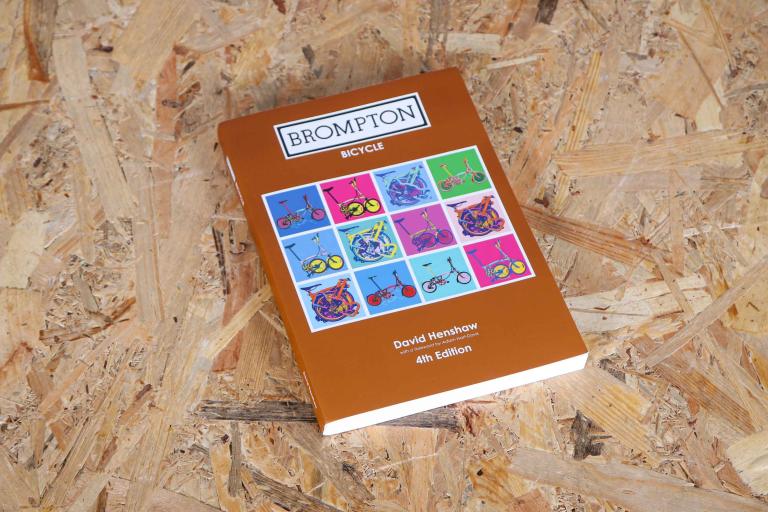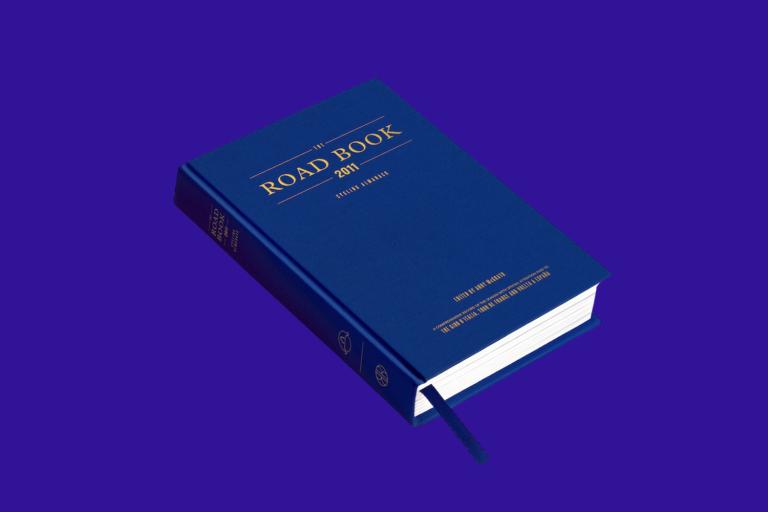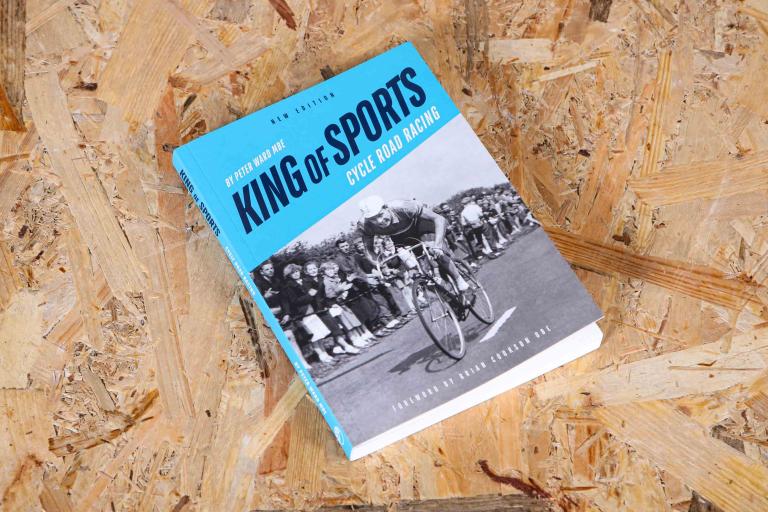- News
- Reviews
- Bikes
- Accessories
- Accessories - misc
- Computer mounts
- Bags
- Bar ends
- Bike bags & cases
- Bottle cages
- Bottles
- Cameras
- Car racks
- Child seats
- Computers
- Glasses
- GPS units
- Helmets
- Lights - front
- Lights - rear
- Lights - sets
- Locks
- Mirrors
- Mudguards
- Racks
- Pumps & CO2 inflators
- Puncture kits
- Reflectives
- Smart watches
- Stands and racks
- Trailers
- Clothing
- Components
- Bar tape & grips
- Bottom brackets
- Brake & gear cables
- Brake & STI levers
- Brake pads & spares
- Brakes
- Cassettes & freewheels
- Chains
- Chainsets & chainrings
- Derailleurs - front
- Derailleurs - rear
- Forks
- Gear levers & shifters
- Groupsets
- Handlebars & extensions
- Headsets
- Hubs
- Inner tubes
- Pedals
- Quick releases & skewers
- Saddles
- Seatposts
- Stems
- Wheels
- Tyres
- Health, fitness and nutrition
- Tools and workshop
- Miscellaneous
- Cross country mountain bikes
- Tubeless valves
- Buyers Guides
- Features
- Forum
- Recommends
- Podcast
review
 The Big Climb by Stephen Norman (credit: road.cc)
The Big Climb by Stephen Norman (credit: road.cc)£22.50
VERDICT:
Well-illustrated overview of Colombia's cycle racing culture and its success
Weight:
819g
Contact:
At road.cc every product is thoroughly tested for as long as it takes to get a proper insight into how well it works. Our reviewers are experienced cyclists that we trust to be objective. While we strive to ensure that opinions expressed are backed up by facts, reviews are by their nature an informed opinion, not a definitive verdict. We don't intentionally try to break anything (except locks) but we do try to look for weak points in any design. The overall score is not just an average of the other scores: it reflects both a product's function and value – with value determined by how a product compares with items of similar spec, quality, and price.
What the road.cc scores meanGood scores are more common than bad, because fortunately good products are more common than bad.
- Exceptional
- Excellent
- Very Good
- Good
- Quite good
- Average
- Not so good
- Poor
- Bad
- Appalling
Colombians have had success at the highest levels of road racing recently, so what better time to learn more about the nation and its cycling? The Big Climb by Stephen Norman reveals the parts played by the country's main race, its terrain, and the drugs – all supported by some rare and compelling images.
- Pros: Timely attention on a burgeoning cycling nation, images
- Cons: Little depth of coverage
You would be forgiven for thinking that The Big Climb was all about the Vuelta a Colombia (Tour of Colombia) cycle race, not least because the cover promises to show 'How the world's toughest road race created a nation of cycling superstars'. Inside, too, the chapters work their way through the race's highlights from 1951 to the present, appearing to reinforce that idea.
However, I suspect that would make the book of limited interest to most people outside Colombia, including me, because let's face it, only real enthusiasts make the effort to follow the race.
Fortunately, Norman soon reveals that The Big Climb has a broader remit, to "tell the story of Colombia's love affair with bike racing", in an attempt to explain why "Colombians are out-performing the rest of Latin America combined". Essentially, the history of the race is used as the basis for a fuller discussion about cycling in Colombia.
While that increases the book's appeal, there is something else that could well be its main attraction: the pictures. You may never have heard of the climbs or riders featured, but the images are as evocative as any you will see elsewhere. This aspect reminded me of the books from the Horton Collection, showing some brutal conditions for racing in the early years: as if the road surfaces were not challenging enough, there seem to be a considerable number of rivers to be forded as well.
The timing of this book is appropriate, it being the year that Colombia became the 10th country to have won all three European Grand Tours (and only the second from outside Europe), with Egan Bernal's win in France completing the set.
Norman is not alone in recognising the current interest in Colombian cycling, with Matt Rendell's more detailed history due out early next year; that appears to be a follow-up to his Kings of the Mountains title, which Norman recommends if "you crave more detail, more political context, more oomph".
Back to the big question: why has Colombia produced a disproportionate number of successful cyclists? Having a successful domestic race like the Vuelta a Colombia is a major factor "that led the Colombian people to their love affair with cycling". If a Colombian rider wants to do well in his home race then he needs to be a good climber – and that same strength stands them in good stead for those WorldTour races that favour climbing ability.
It was in 1983 that we got to see Colombian cyclists competing seriously on the world stage, when "the organisers of the Tour de France opened the race to amateurs, hoping to attract some Eastern European teams. Instead they got Colombians". Not long afterwards, some top European riders started a trend of racing in Colombia, as "it was perfect for European riders who wanted to train at altitude early in the season": however, the race in question was normally a competing event to the Vuelta, the Clásico RCN, which was run at a more suitable time of the year.
> Buyer's Guide: 34 of the best books about cycling
You can't talk about cycle racing these days without some mention of performance-enhancing drugs – and Colombia's case recreational drugs also feature. We have previously mentioned the involvement of the Escobar family in the sport, and it seems that profits from trading in cocaine supported many teams: "the drug lords...had been brought up on the glory of road racing. So they were cycling fans. Sponsoring a cycle team was a cool thing to do with your money."
On the performance enhancing side, Norman reports that "the records of Colombian road racing from 1998 until 2015 shows that doping was not tackled with the same vigour as it (eventually) was in Europe". Take the example of the 2006 edition of the race: "on the eve of the start, blood tests showed that over half of the contestants had red blood cell counts exceeding 50%. Normally an athlete with such a high count would be suspended, under suspicion of using EPO. After frantic discussion, the failure mark was moved to 60% and the samples were destroyed!"
Unfortunately, it seems that the only time the Vuelta a Colombia is deemed newsworthy outside Colombia is still for similar matters.
Norman covers a lot of ground in The Big Climb, within not many pages; with those fascinating pictures taking up a lot of the space, don't expect too much detail on any one topic. However, he partly makes up for this with QR codes scattered throughout the book, each of which leads to a short video clip that expands on a subject. Less successful for me were the pages given over to brief descriptions of the regions (or departments) of Colombia, which came across as having been written by the local tourist information office.
Verdict
Well-illustrated overview of Colombia's cycle racing culture and its success
road.cc test report
Make and model: The Big Climb: how the world's toughest road race created a nation of cycling superstars
Size tested: Paperback
Tell us what the product is for and who it's aimed at. What do the manufacturers say about it? How does that compare to your own feelings about it?
From Smiths Hall: "A richly illustrated, full colour book which traces the history of Colombian cycling from the 1950s to the present day. It explains how the Vuelta a Colombia, a punishing 3 week race across the Andes, came to grip the psyche of the Colombian nation and create some of the finest cyclists the world has yet seen. The book features 134 old photographs by Horacio Gil Ochoa, as well as numerous maps and diagrams. The book has 168 full colour pages within a laminated card cover and durable stitched binding."
Tell us some more about the technical aspects of the product?
Title: The Big Climb
Author: Stephen Norman
Publisher: Smiths Hall
Date: 11/11/19
Format: Paperback
Pages: 163
ISBN: 9781916248908
Price: £22.50
Tell us what you particularly liked about the product
The pictures. And the flipbook-style image of a cyclist climbing in the corner of the page.
Tell us what you particularly disliked about the product
Some parts just didn't interest me, and took up valuable space.
Did you enjoy using the product? Yes
Would you consider buying the product? Yes
Would you recommend the product to a friend? Yes, selectively.
Use this box to explain your overall score
It's about time we had another look at Colombian cycling, and The Big Climb gives wide-ranging but brief coverage of the factors that have contributed to their racing success. However, I feel that the splendid images deserve equal billing.
About the tester
Age: 60
I usually ride: My best bike is:
I've been riding for: Over 20 years I ride: Most days I would class myself as: Expert
I regularly do the following types of riding: touring, club rides, sportives, general fitness riding




I've had that on EE for some time
Given his circumstances, he would most likely be sent back to Hong Kong after serving whatever proportion his time he will actually serve....
He lost me in the video when he claimed that as you can raise your heel up to 30,000 times during a ride, the lighter weight will save you energy...
Wiveliscombe residents urged to join community protest against new car parking charges...
It's not the first country to spring to mind I admit but Ridley make some very nice mountainbikes that are being used by the KMC team.
Someone should point out that Sky lose money on their football channels, how does that fit into the bull they put out? And as for watching free to...
To measure chain wear with a ruler you have to be able to measure so precisely that you can tell the difference, measuring from the exact centre of...
"However, he said he was running late and decided to turn left into Norwich Avenue to avoid congestion, when he heard a bang which he said sounded...
Salisbury Shopmobility to reopen after car crashed into wall...
The bars are included although they are apparently 400 mm in all sizes which won't suit everybody. From a recent picture (below) of Astana's...